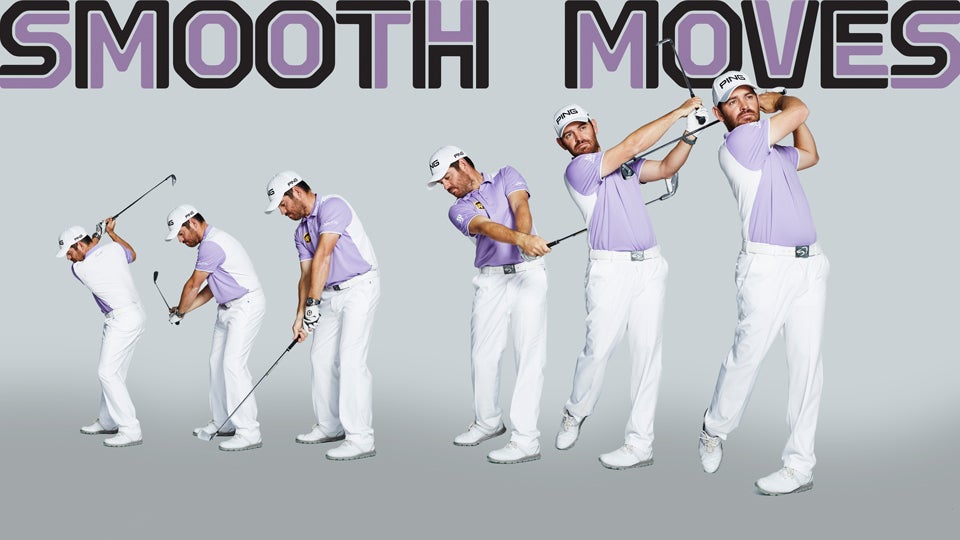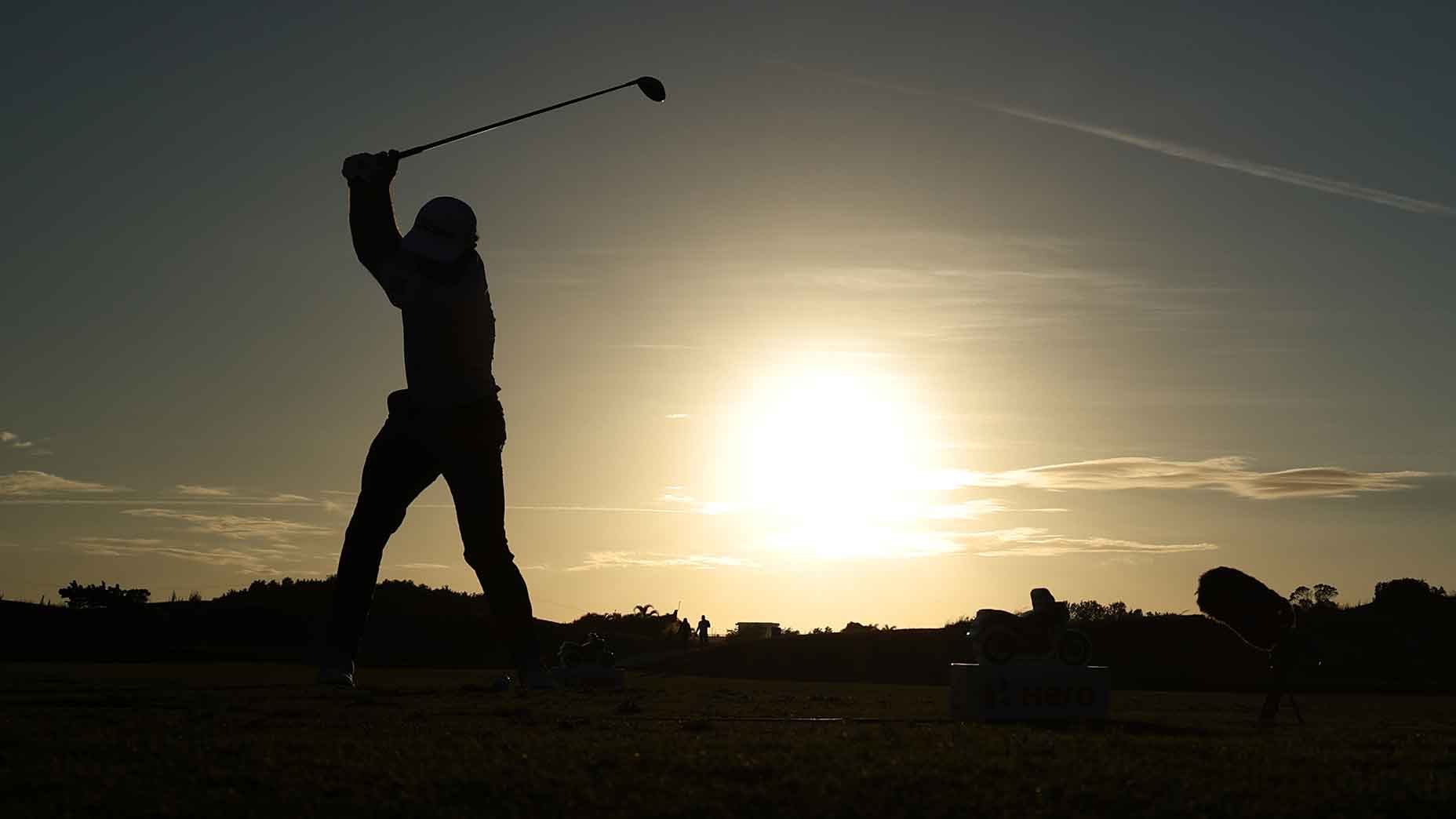My swing has been called the smoothest on Tour. That’s a huge compliment, because there are a lot of great players—and I work hard on tempo. To make your motion a lot sweeter, try the four moves on these pages. You’ll soon hit every single iron in the center of the clubface.
1. LET THE CLUB DO THE WORK
My mantra? Swing softly—and choose a bigger stick. When I’m between distances, I reach for the longer club. Heck, I even club-up sometimes when I don’t have to—longer clubs go farther, so you don?t rush your motion. This smooths out your swing, and the smoother it is, the easier it is to catch the ball flush.
This has always been my approach. Growing up in South Africa in the 1990s, I copied Ernie Els. He was a national hero and the poster boy for a smooth, powerful swing. Plus, my hometown of Mossel Bay is one of the windiest places in South Africa (locals joke that even the birds have to walk). I had to keep the ball low, which meant learning to knock down 5- and 6-irons, rather than, say, launching a high 8-iron.
In addition to taking more club, a good setup promotes smoothness. Try this setup trick: Pin your upper left arm to your chest, then keep the connection when you swing. This syncs up your arm swing with your body turn, which is the building block of a smooth motion.

TAKE A BOLD HOLD
You can grip the club in many ways. Most players overlap. I interlock my fingers, and my right-hand hold is stronger than my left. It’s a bit unorthodox, but it works. The key for you? Find a comfortable grip, even if it bucks tradition. Forcing your hands into a hold that conforms to textbook instruction can rob you of feel, and your tempo will be toast.

2. TRIGGER A SIMPLE BACKSWING
Quickness kills rhythm. My pre-swing press ignites a Tour-caliber takeaway. Snatching the club back is a rhythm-killer, but I see it all the time in pro-ams. I can be guilty of this, too, especially in pressure situations. So I developed a trigger to keep me smooth from the very start, and I now use it on just about every swing.
Here’s how it works: As soon as I settle into my stance, I press my hands toward the target (middle photo, above), letting some of my weight shift to my left foot. Then I start the club back, shifting the weight back to my right foot. I’ll often do it while counting in my head: “1”—settle, “2”—press, “3”—swing. This trigger does a couple of important things for me: It helps me manage my weight shift, and it adds fluidity to my pre-swing, preventing a herky-jerky start. Do you often feel “stuck” at address, as though you’re wearing cement spikes? My pre-swing gives your takeaway a nice sense of “flow”—and because you’re less likely to snatch the club back, it will start, and stay, on plane.

3. AN EASY DRILL FOR PERFECT RHYTHM
Unlock the secrets to smoothness with this practice swing. My favorite swing drill involves hitting shots with my feet close together. I love it because it automatically smooths out my swing. It also helps me get a feel for my arms and body working in unison and syncing up at impact. Here’s how to do it.
Take your regular address with a pitching wedge, but with your feet about two inches apart (or even touching). Make a smooth, three-quarter swing, as though you’re hitting a 70-yard pitch. In just a few attempts, you should start catching the ball flush. If you don’t, try the following trouble-shooting moves to get your motion grooved:
1. Keep your head still and in roughly the same place from start to finish.
2. Shift your weight between the middle of each foot. Don’t slide toward either heel or toe.
3. Maintain your spine angle throughout. If your motion is smooth, there’s no need to “lift.”

4. PAUSE AT THE TOP
Rushing your downswing can kill good contact. Here’s the way to start down—and crush every iron. I believe that if you get your top position right, solid impact happens almost by itself. The only thing that can mess you up is rushing the start of your downswing. So don’t do it! Every good player I know pauses at the top, if only for an instant. That tiny pause harmonizes all the moving parts happening in your swing, creating the smooth tempo needed for pure contact.
Try this: Swing to the top, maintaining the connection between your left arm and your chest (photo below). Hold your top position for a count, then start down. Build speed slowly until you max out at impact. The correct feeling is that your arms (rather than your shoulders) are falling. Get it right and you’ll reach peak speed when it counts.







